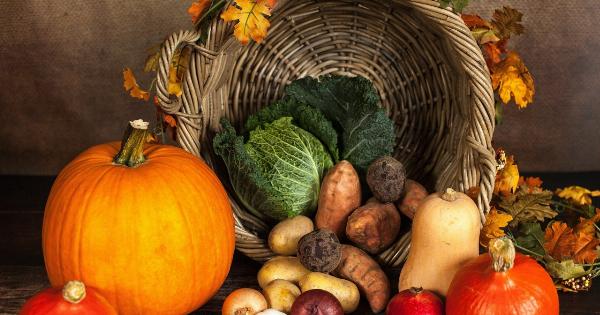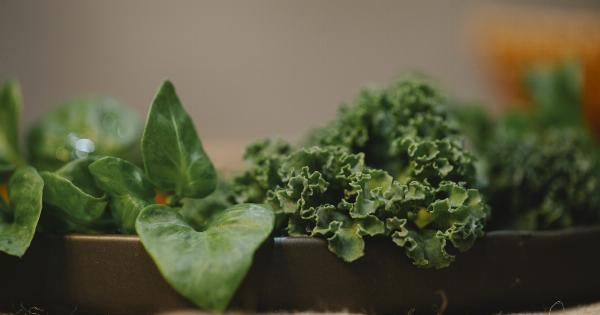When it comes to food, we often discard certain parts without realizing their potential. One such part is the skin of fruits and vegetables. Not only do they add color and texture to our meals, but they are also packed with nutrients.
In this article, we will explore a variety of whole foods with edible skins, their benefits, and delicious ways to incorporate them into your diet.
1. Apples
Apples are a popular fruit with a wide variety of skin colors – from bright red to golden yellow. The skin of an apple contains antioxidants, dietary fiber, and vitamin C.
Ensure you wash the apple thoroughly before consuming it to remove any residue or pesticides. You can enjoy apples with their skin on in a refreshing fruit salad or make a savory apple and goat cheese tart.
2. Potatoes
Potatoes are a staple food in many cuisines around the world. While most of us peel the skin off before cooking, potato skins are rich in fiber and nutrients like potassium and vitamin C.
Baking or roasting potatoes with their skin on helps retain their nutrients and adds a delicious crispy texture. Try making crispy baked potato wedges or loaded baked potatoes topped with cheese and sour cream.
3. Cucumbers
Cucumbers are usually associated with a crunchy and refreshing interior, but their thin skin bears nutritional value too. Cucumber skin contains fiber, vitamin K, and antioxidants.
When buying cucumbers, opt for the organic ones, as the skin of conventionally grown cucumbers may have pesticide residues. Include sliced cucumbers in salads, make pickles, or enjoy them in a cucumber and dill yogurt dip.
4. Kiwis
Kiwis are small fruits with a fuzzy brown skin and vibrant green flesh full of tiny black seeds. The skin of a kiwi is edible and adds a slightly tangy flavor to the sweet flesh. Kiwi skins are a great source of fiber, folate, and vitamin E.
Rinse the kiwi thoroughly, trim off the ends, and bite into the fuzzy skin for an extra nutritional boost. Alternatively, slice kiwis and use them in fruit tarts or salads.
5. Carrots
Carrots are known for their bright orange color and their crunchiness, but their skin is often overlooked. The skin of carrots is safe to eat and offers additional nutritional benefits.
It contains fiber and antioxidants that help support healthy skin and boost immune function. Before consuming carrots with their skin on, ensure you wash and scrub them to remove any dirt or debris. Add sliced carrots to stir-fries, roast them with honey and herbs, or enjoy them raw in a crunchy carrot salad.
6. Eggplants
Eggplants have a smooth, glossy purple skin and a creamy interior. The skin of an eggplant is not only edible but also packed with antioxidants and fiber.
When cooking eggplants, it is best to leave the skin on as it helps the vegetable retain its shape and enhances the overall flavor. Try making a traditional eggplant parmesan, grilled eggplant slices with a drizzle of olive oil, or a smoky baba ganoush dip.
7. Peaches
Peaches are juicy fruits with a fuzzy skin that comes in various shades of yellow and red. The skin of a peach contains important nutrients like dietary fiber, vitamin C, and antioxidants.
While some prefer to peel the skin off before eating, leaving it on enhances the overall flavor and nutritional value. Enjoy fresh peaches as a snack, in smoothies, or incorporate them into a peach cobbler.
8. Pears
Pears have a thin, slightly grainy skin that is often removed before eating. However, the skin holds a significant amount of fiber, antioxidants, and vitamin C.
To reap the benefits of pear skin, rinse the fruit thoroughly and enjoy it with the skin intact. Sliced pears are fantastic additions to salads, baked into pies, or sautéed with a sprinkle of cinnamon for a delicious dessert.
9. Beets
Beets are vibrant root vegetables that come in various colors, including red, golden, and striped. While the skin may appear tough, it is entirely edible and holds important nutrients like fiber, vitamin C, and potassium.
After washing the beets, you can leave the skin on while cooking to retain its nutritional value and vibrant color. Roast beets with a drizzle of balsamic glaze, grate them into salads, or enjoy pickled beets as a tangy side dish.
10. Tomatoes
Tomatoes are widely used in cooking and come in various colors, shapes, and sizes. The skin of a tomato is thin and tender, and it holds valuable nutrients such as dietary fiber, lycopene, and vitamin C.
While some recipes call for peeled tomatoes, you can enjoy the skin on for added flavor and nutrition. Add sliced tomatoes to sandwiches or burgers, make homemade tomato sauce, or enjoy them in a classic Caprese salad.
Conclusion
Don’t let the skins of fruits and vegetables go to waste! Embrace the nutritional benefits and delicious flavors they offer.
By incorporating whole foods with edible skins into your diet, you can enjoy a wider range of nutrients and add variety to your meals. Remember to wash them thoroughly before consumption and opt for organic produce whenever possible to minimize pesticide exposure.
So, the next time you reach for an apple or a potato, think twice before peeling – the skin might just be the most nutritious part!.




























